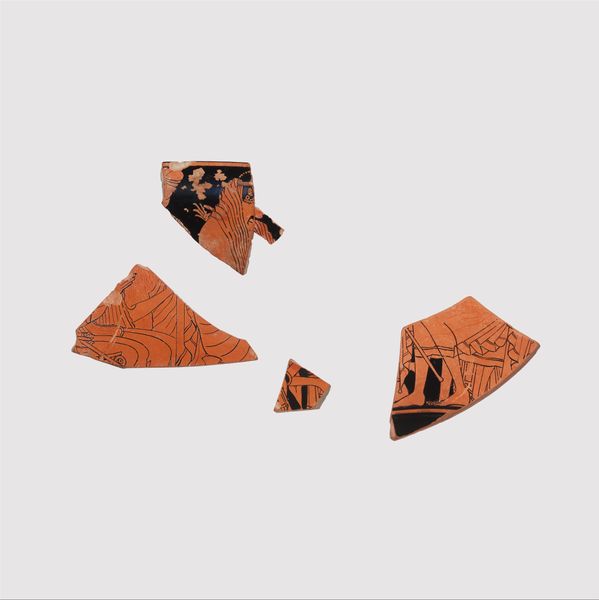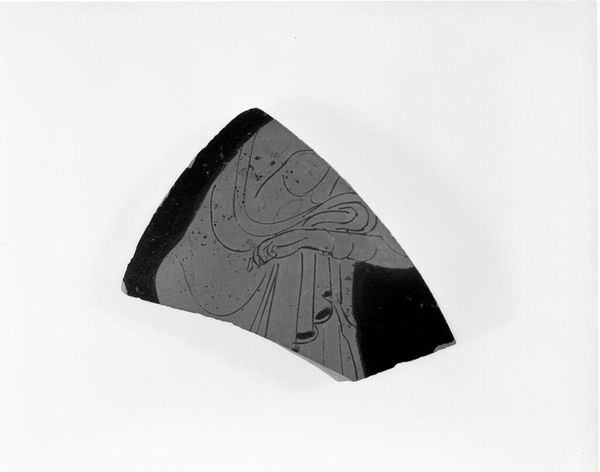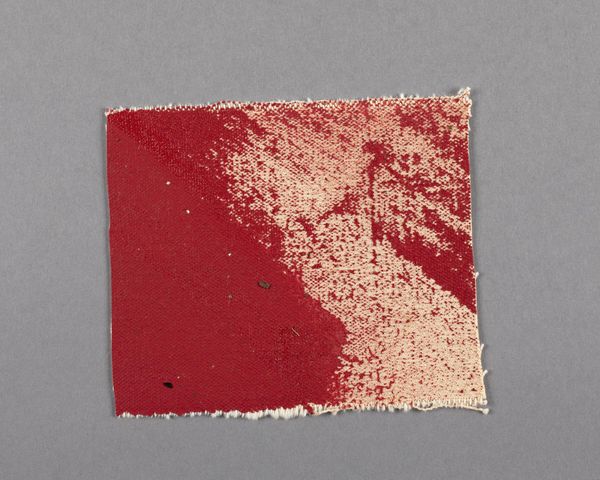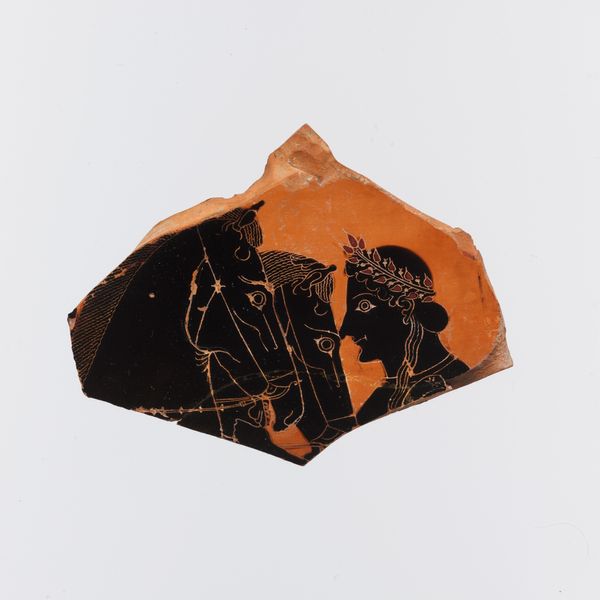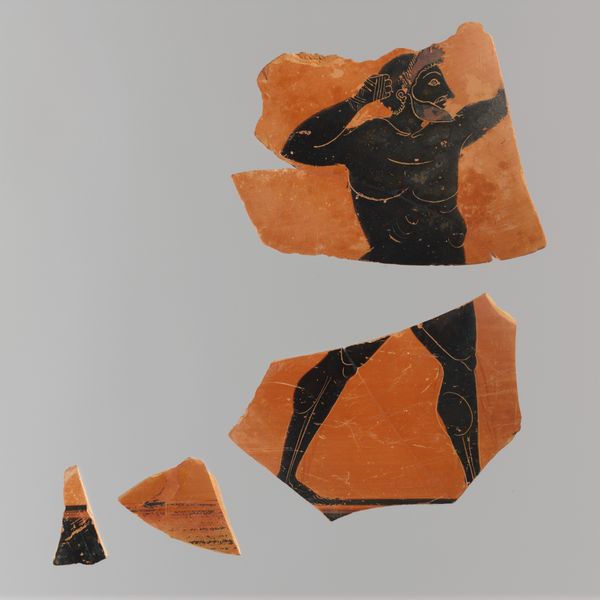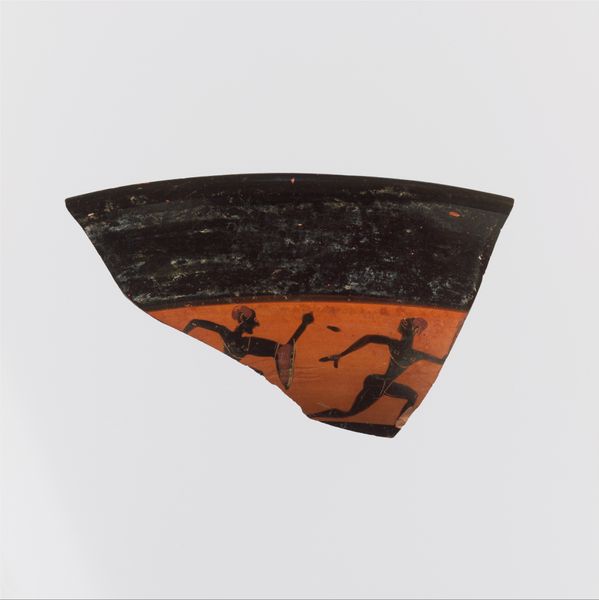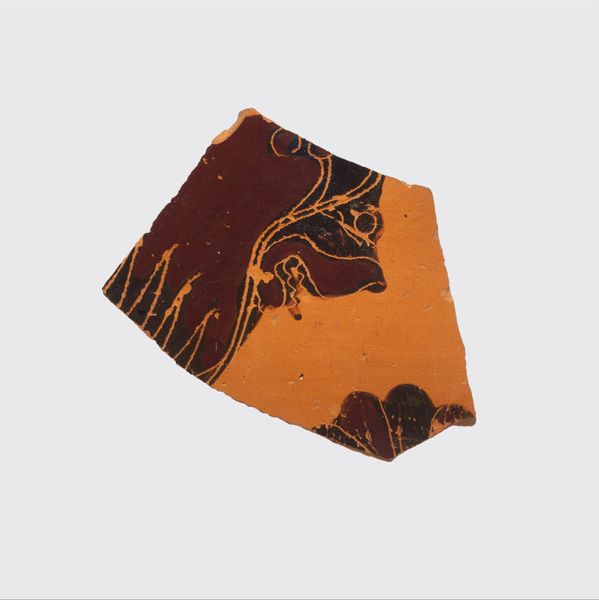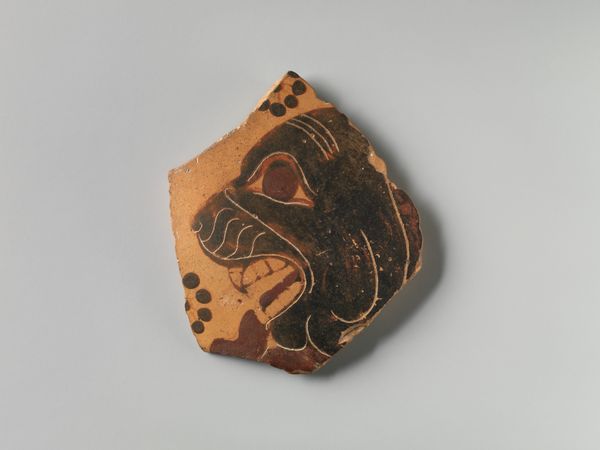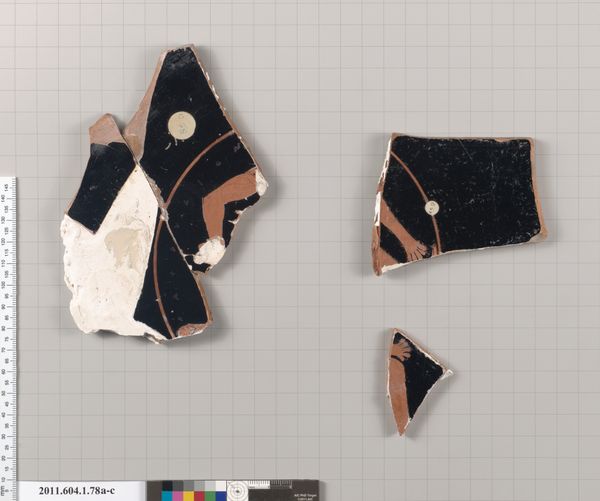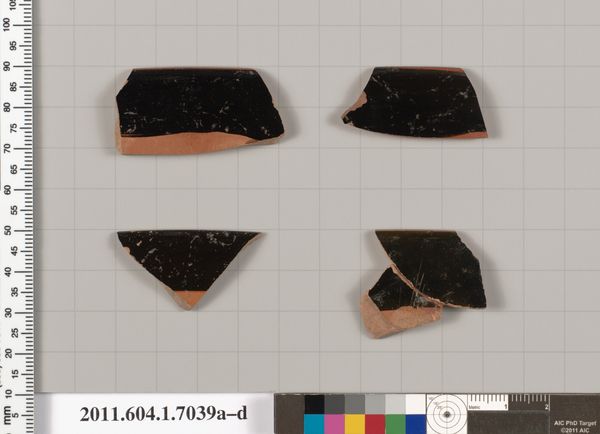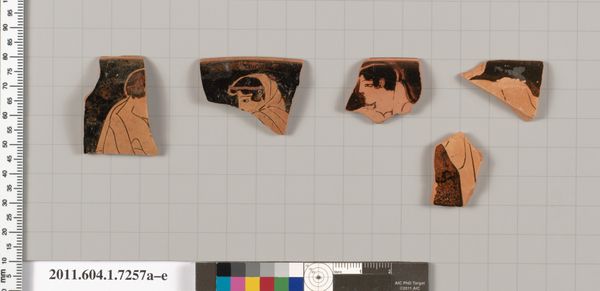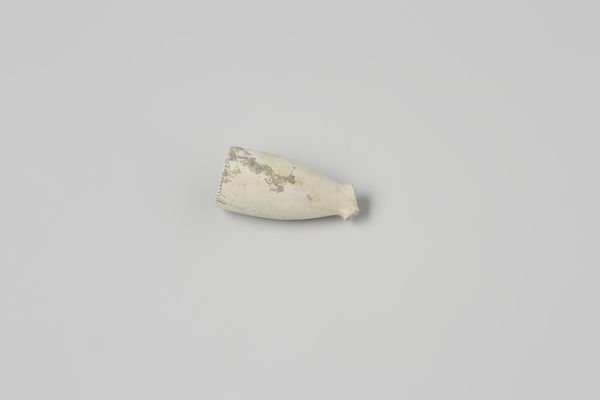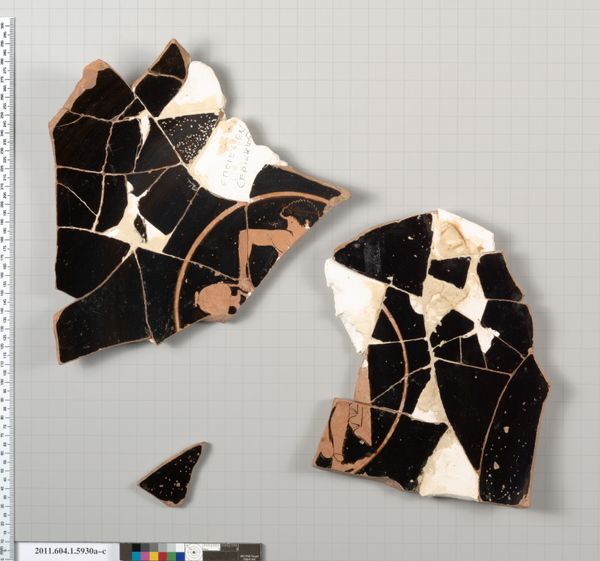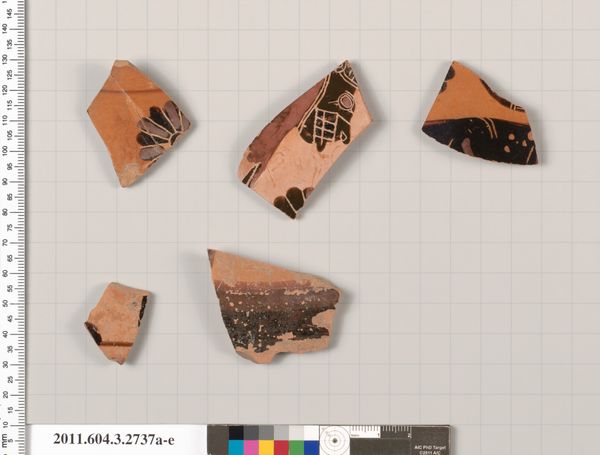
drawing, ceramic, pendant
#
drawing
#
narrative-art
#
greek-and-roman-art
#
ceramic
#
figuration
#
ancient-mediterranean
#
pendant
Dimensions: H. 1 1/4 in. (3.2 cm)
Copyright: Public Domain
Curator: Here we have fragments from a terracotta kylix, a drinking cup, created around 515 BC, attributed to Euthymides, and residing here at the Metropolitan Museum of Art. Editor: It feels melancholic, doesn't it? Even with so little remaining, I sense a weight of history, a tangible link to the hands that shaped and used this cup so long ago. Curator: Absolutely. Thinking materially, each fragment represents a decision in production. The shaping of the clay, the application of the black glaze, the precise scoring lines cutting through the black paint, all tell stories of process, skill and the ancient workshop itself. Editor: And the scene itself—or, the remnants of it—hint at narrative, at perhaps ritual, at the stories shared while drinking. Given the fragmentary nature, we can consider how gender, class, or societal values influenced the original complete work and its cultural function, and who was included or excluded. Curator: The ceramic's inherent fragility also speaks to the wider trade systems, labor invested in its design, as it survived from antiquity as waste until excavated by archaelogists to eventually become prized in collections like this today. Its a poignant story in itself. Editor: What were these people celebrating or mourning? What communal bonds were being strengthened over this shared vessel? This object becomes a space to reflect on how identities were constructed and negotiated during ancient times. Curator: Exactly! Every step, every imperfection holds information—we can use spectroscopy, X-rays, or just careful physical analysis of the layers to understand how each craftperson handled materials within very specific economic and physical constraints. Editor: These fragmented moments still possess agency. The figures’ movements, even in their partial state, invite us to envision entire dialogues and interactions. It pushes us to contemplate the complexities of human connections in this distant society, while leaving clues of the ancient social contexts. Curator: Viewing each painted portion can then suggest just how this scene was designed for motion and interaction with those who handle it; considering that it wasn’t made to sit static like this, within a gallery case, invites even deeper reflection about its past usages! Editor: A compelling testament to art's ability to transcend time, prompting conversations about our past, present, and continued future. Curator: Indeed—viewing these simple ceramic materials this way, one is challenged to understand its complex place as both tool, luxury, and cultural record simultaneously!
Comments
No comments
Be the first to comment and join the conversation on the ultimate creative platform.
